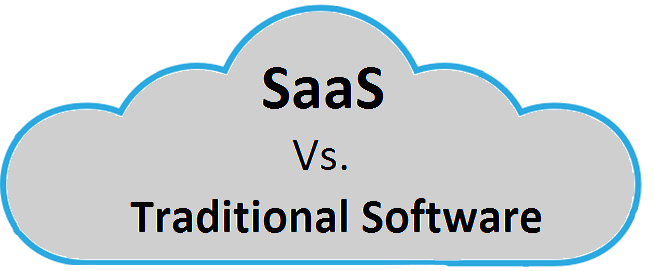How does SaaS differ from traditional software models?
In the realm of modern technology, the landscape of software development has undergone a transformative shift. With the rise of Software as a Service (SaaS), traditional software models face stiff competition. This article delves into the nuances that differentiate SaaS from traditional software, providing valuable insights to help you navigate the ever-evolving world of software solutions.
Welcome to a journey through the dynamic world of software! The software industry has come a long way, and two prominent models stand out: Software as a Service (SaaS) and traditional software models. Understanding their differences is crucial in the contemporary digital age, where efficiency, accessibility, and scalability are paramount. Let’s delve into the intricacies and shed light on the evolution that has led to the coexistence of these two models.
Evolution of Software: A Glimpse into the Past
From Local Installations to Cloud-Based Solutions
In the early days of software, traditional models dominated the scene. Users would purchase software licenses and install them on their local machines. However, with the advent of the internet and cloud technology, SaaS emerged as a game-changer. SaaS applications are hosted and maintained by providers on remote servers, accessed through the web, and often offered on a subscription basis.
Flexibility and Scalability: A Paradigm Shift
Traditional software required substantial investments and updates were often cumbersome. SaaS, on the other hand, offers flexibility with subscription-based pricing, allowing businesses to scale resources up or down as needed. The ability to adapt swiftly to changing demands has positioned SaaS as a highly attractive solution.
Key Differences: How SaaS Sets Itself Apart
Ownership and Licensing
Traditional Software: Purchased via a one-time payment or a periodic licensing fee, granting ownership and perpetual usage rights. SaaS: Accessed through subscriptions, offering usage rights but not ownership of the software. Users rely on the service provider’s infrastructure.
Accessibility and Maintenance
Traditional Software: Installed locally, necessitating manual updates and maintenance by the user or IT staff. SaaS: Accessible via a web browser, with automatic updates and maintenance handled by the service provider, ensuring seamless user experience.
Cost Structure
Traditional Software: Upfront costs can be high, covering the purchase or licensing fees, with additional costs for updates, support, and maintenance. SaaS: Typically operates on a subscription-based model, spreading the costs over time and often including support, updates, and maintenance in the subscription fee.
Addressing Common Questions
Can I switch from traditional software to SaaS seamlessly?
Absolutely! The transition can be smooth with proper planning and data migration strategies. It’s essential to assess your specific needs and choose a SaaS solution that aligns with your business requirements.
Are SaaS applications as secure as traditional software?
Yes, SaaS providers prioritize security and compliance. With robust measures in place, such as data encryption and regular security updates, SaaS applications often offer a secure environment for users.
Do SaaS applications require internet connectivity at all times?
Yes, since SaaS applications are hosted in the cloud, a stable internet connection is necessary for users to access and utilize the software effectively.
How does cost efficiency compare between SaaS and traditional software?
In the long run, SaaS proves to be cost-effective due to its subscription-based model, which eliminates hefty upfront expenses. Additionally, the scalability of SaaS ensures you pay only for the resources you need.
What are the advantages of SaaS for small businesses?
SaaS offers small businesses access to advanced software solutions without the need for significant upfront investments. This affordability, coupled with ease of use and scalability, makes it an ideal choice for startups and small enterprises.
Can traditional software be as flexible as SaaS?
Traditional software models are less flexible compared to SaaS. Upgrades and customizations may be more cumbersome and costly in traditional software setups.
Conclusion
In the ever-evolving realm of software, understanding the differences between SaaS and traditional models is crucial for informed decision-making. Both have their merits, but the scalability, cost-efficiency, and accessibility of SaaS have made it a dominant force in today’s tech landscape. Whether you opt for the ownership of traditional software or the flexibility of SaaS, the choice ultimately depends on your unique business needs and preferences.





